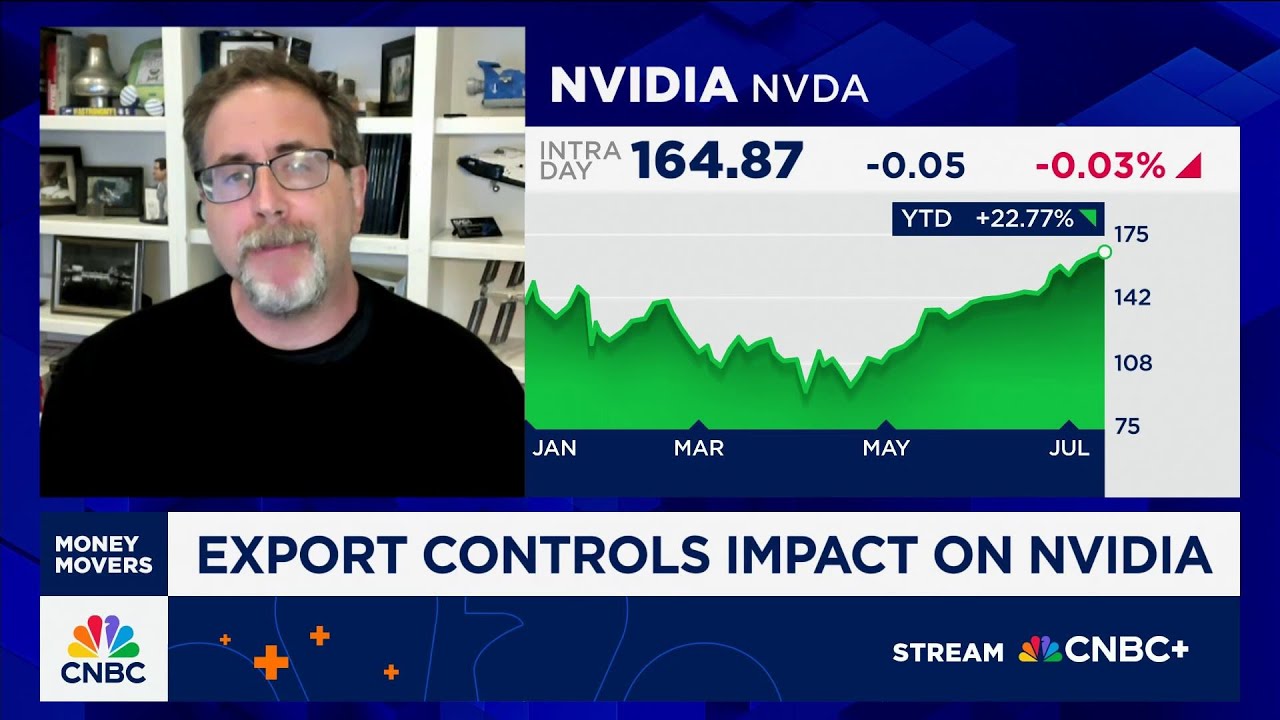Bernstein’s Stacy Rasgon explains that Nvidia’s CEO Jensen Huang is navigating complex geopolitical tensions and export restrictions that limit the company’s access to the Chinese market, while China increasingly relies on domestic technology for its military and data centers. Despite these challenges, Nvidia’s strategic efforts and potential easing of U.S. regulations could unlock growth opportunities, even as competitors like AMD and Broadcom advance in the competitive AI chip industry.
In the discussion, Bernstein Research Managing Director Stacy Rasgon addresses concerns about Nvidia’s technology being used by the Chinese military. He argues that, similar to the American military, the Chinese military cannot rely on foreign technology like Nvidia’s due to restrictions and the risk of sudden limitations. Furthermore, China already possesses significant computing capacity with numerous supercomputers developed by local engineers, reducing their dependence on Nvidia’s chips or American tech stacks for military purposes.
Rasgon highlights the ongoing tension between Nvidia’s CEO Jensen Huang and the hawkish elements within the U.S. administration, which are pushing to limit technology transfers to China. Despite these restrictions, Rasgon believes Huang’s perspective is not entirely wrong. The performance of Nvidia’s products previously allowed for export to China was already limited, and local Chinese alternatives from companies like Huawei often outperform these restricted Nvidia products. The tightened export controls have further pushed China to develop and rely on its domestic technology ecosystem, potentially leading to a long-term shift away from Nvidia in the Chinese market.
Regarding Nvidia’s future in China, Rasgon notes that the company’s current financial models exclude any revenue from the Chinese data center market due to export restrictions. If the U.S. administration were to ease these restrictions or if Nvidia manages to develop products that meet the lowered export thresholds, it could represent a significant upside for the company. Huang’s upcoming visit to Beijing is seen as a strategic move to maintain relationships and explore opportunities in this large and important market, despite the political and regulatory challenges.
The conversation also touches on the broader semiconductor and AI chip market, with Rasgon commenting on competitors like AMD and Broadcom. While AMD’s stock has surged recently, Rasgon remains cautious, noting that the company’s next-generation products with significant impact are still a year away. He acknowledges AMD’s efforts to capture market share and develop new products but suggests that the current enthusiasm may be somewhat premature. Broadcom, on the other hand, is highlighted for its role in supplying custom chips to hyperscalers and its optimistic earnings outlook, driven by increasing demand for AI inference applications.
Overall, the discussion underscores the complex balancing act Nvidia’s leadership must perform amid geopolitical tensions, export restrictions, and fierce competition in the AI chip market. While Nvidia faces challenges in maintaining its foothold in China, the company’s strategic efforts and potential regulatory changes could open new opportunities. Meanwhile, competitors like AMD and Broadcom continue to advance their positions, contributing to a dynamic and rapidly evolving semiconductor landscape.
